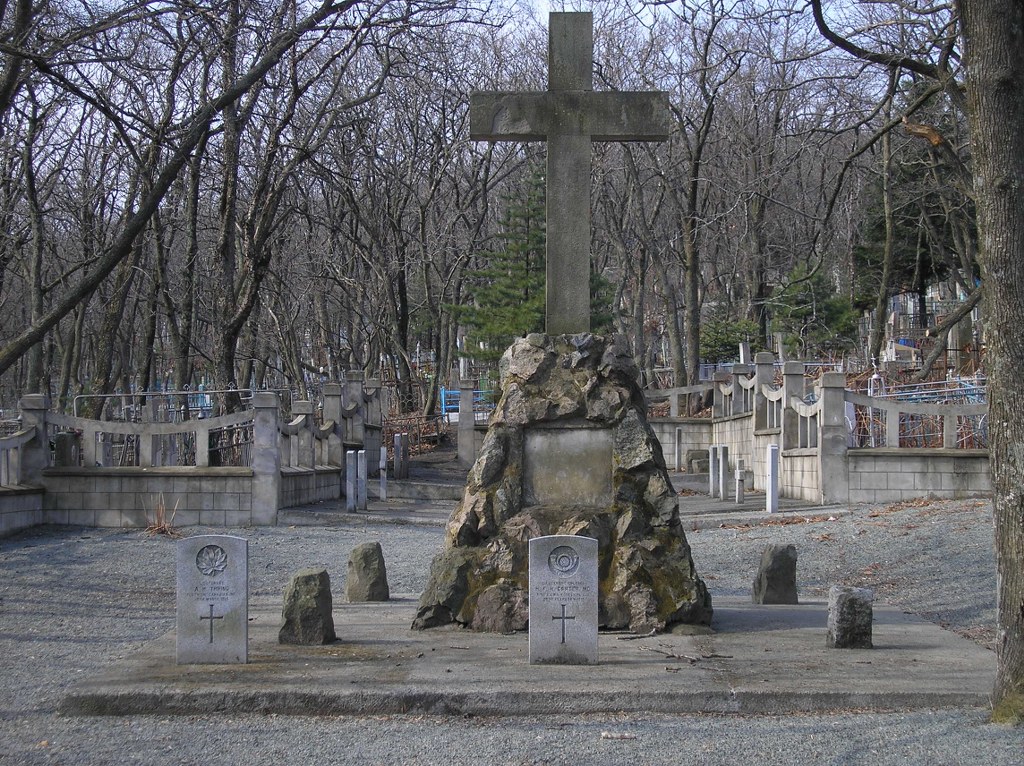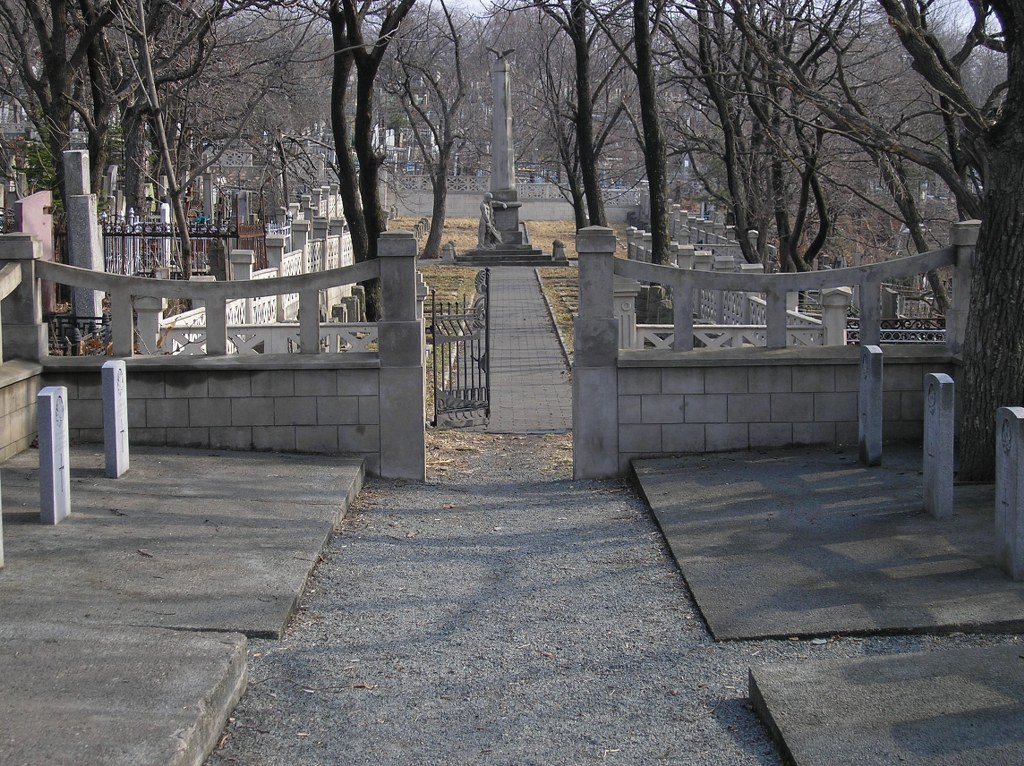Churkin Russian Naval Cemetery
- Country Russian Federation (East)
- Total identified casualties 28 Find these casualties
- Identified casualties from First World War
- GPS Coordinates Latitude: 43.09028, Longitude: 131.94034
Location information
Churkin Naval Cemetery, Vladivostok is on the Churkin peninsula and was used by British, French, American and Czechoslovak troops. The Canadian Government erected a central monument in the British plot; and on this, the Vladivostok Memorial, are inscribed the names of the 13 British soldiers whose graves are in other parts of Siberia.
History information
CHURKIN RUSSIAN NAVAL CEMETERY, VLADIVOSTOK, on the Churkin peninsula, was used by British, French, American and Czechoslovak troops. The Canadian Government erected a central monument in the British plot; and on this, the VLADIVOSTOK MEMORIAL, are inscribed the names of the 13 British soldiers whose graves are in other parts of Siberia.
The 37 British War Graves at Vladivostok, and the 13 names on the Vladivostok Memorial, are due to the period of confusion in Siberia which followed the Treaty of Brest Litovsk. The establishment of a Siberian (anti-Bolshevik) Republic in December 1917 (and of other Republics in Siberia a little later) was followed by the march of the Czechoslovak Divisions in the Russian service from Poland eastwards, and in particular by the arrival of the 2nd Czechoslovak Division at Valdivostok in May 1918. The Japanese Government had sent a small detachment to that port in January, 1918; British and Japanese Marines landed on the 5th April; a British battalion came in June, and another in December, and in October a stronger Canadian force had landed. The autumn fighting went in favour of the Allies and Admiral Koltchak's Government, but the tide turned in 1919. An official French statement gave the number of troops of nine Allied or Associated nations in Siberia, in March 1919, as nearly 120,000, including 55,000 Czechoslovaks; they were gradually withdrawn. The British and Japanese left in the winter of 1919; Koltchak was finally defeated on the 8th January 1920, at Krasnoyarsk; the Czechoslovaks and an American hospital evacuated Vladivostok in March 1920.
The Siberian Expeditionary Force was mainly Canadian, and it included No. II Canadian Stationary Hospital and No. 16 Canadian Field Ambulance. It left the graves of 14 Canadian soldiers and 14 from the United Kingdom in Churkin Russian Naval Cemetery; those of seven sailors of the Royal Navy, one Marine and one United Kingdom soldier in the Lutheran part of Pokrovskaya Cemetery; and those of ten soldiers from the United Kingdom and three from Canada at other places in Siberia.



